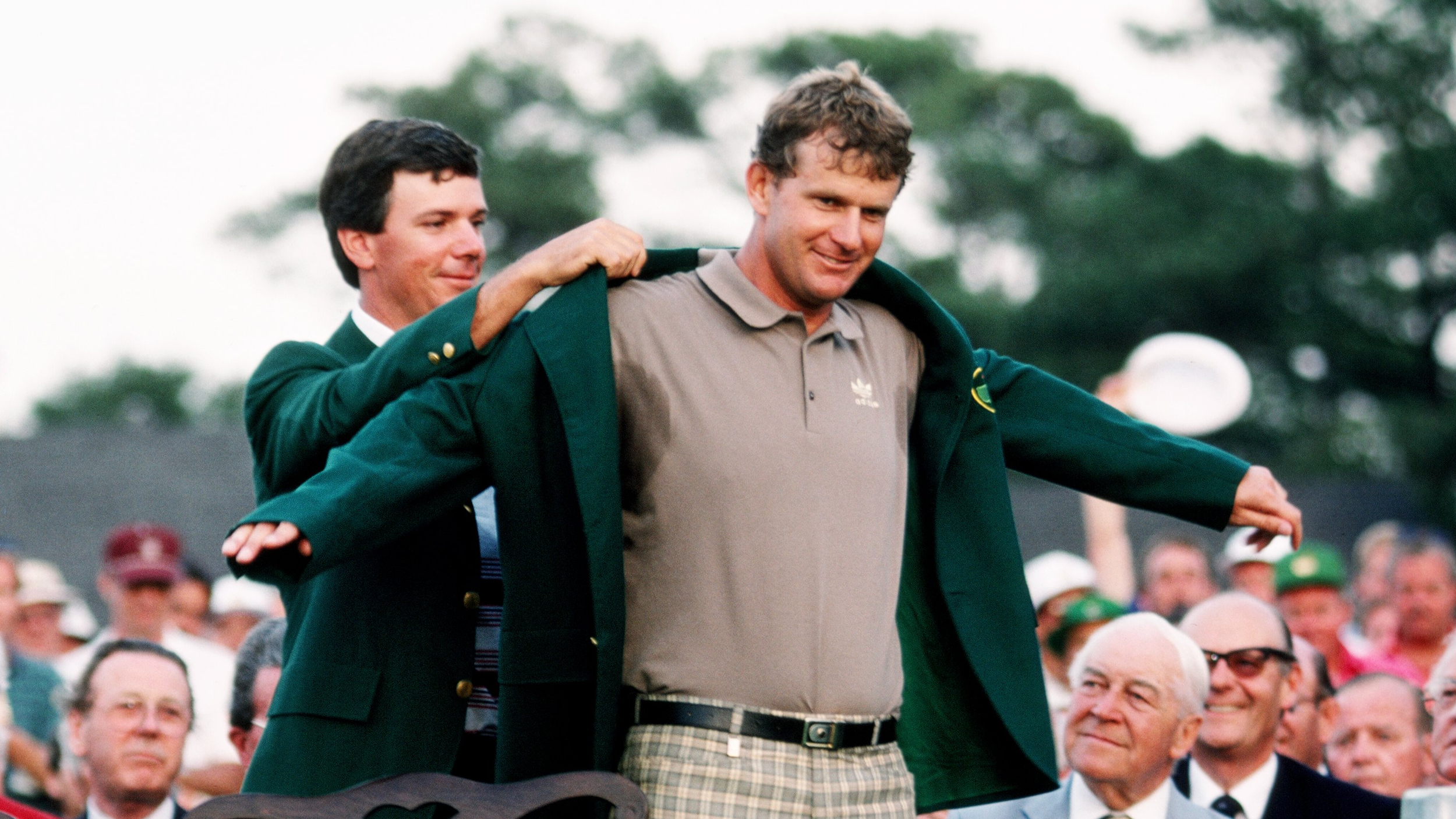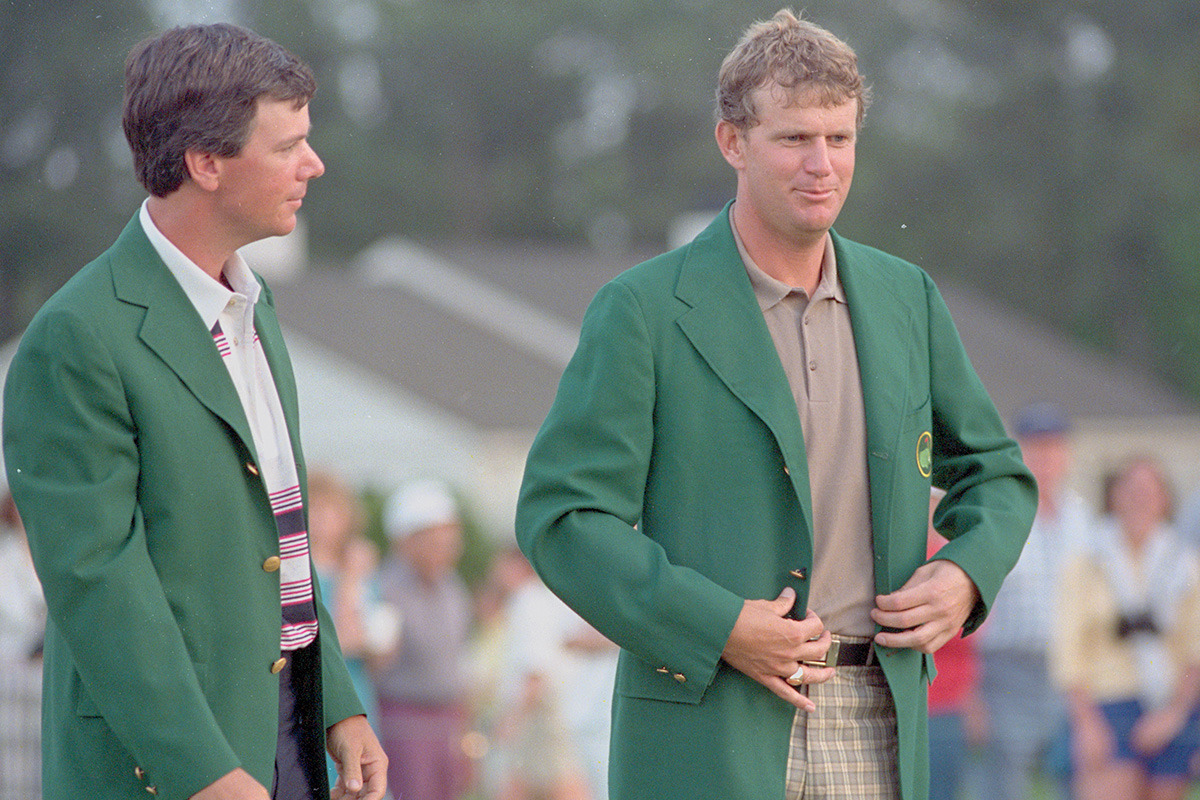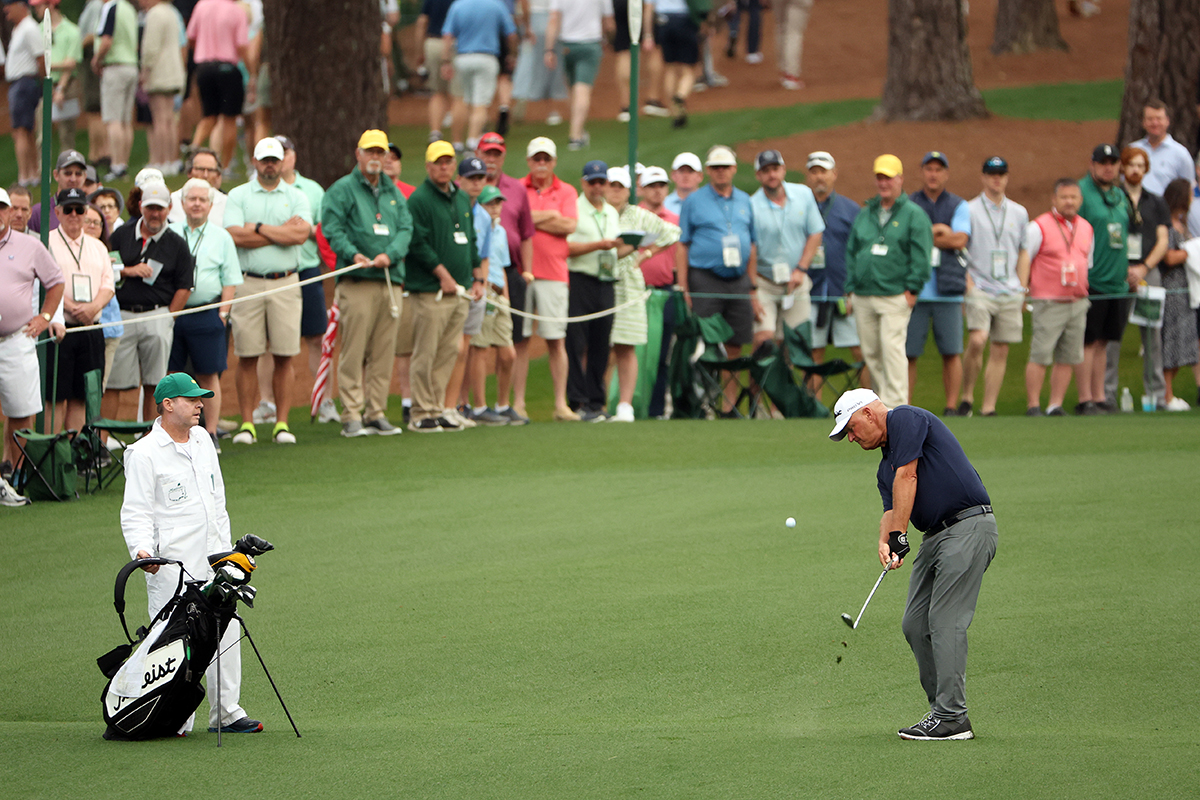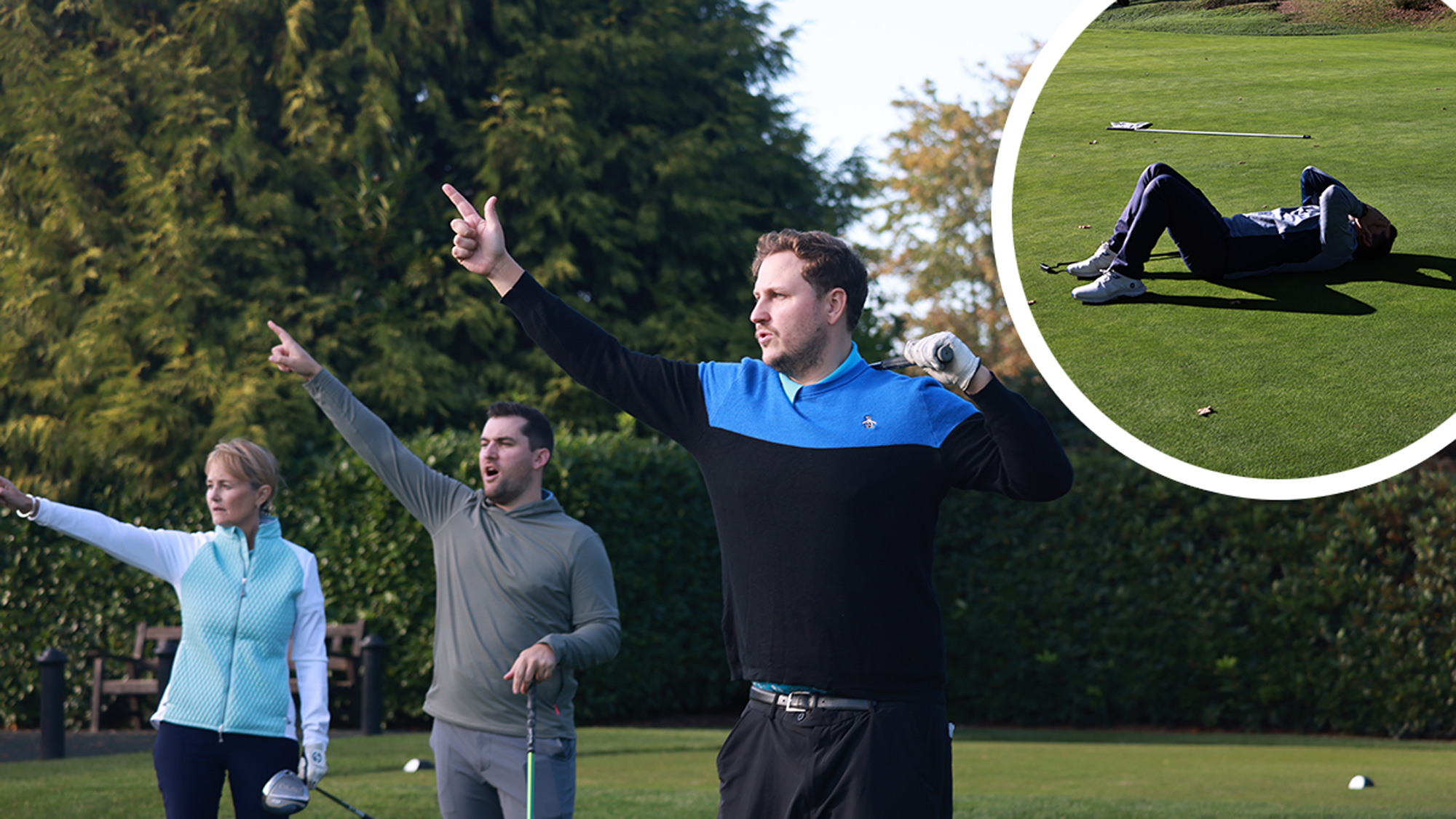Sandy Lyle Shared 3 Top Tips With Us Prior To Winning The Masters in 1988... And They Could Still Save You Shots 37 Years Later
The 1988 Masters Champion shared his expert tips in the January 1988 issue of Golf Monthly, but they are still absolute gems for amateur golfers to this day...


The first Major of the season is right around the corner, so what better way to kick things off than by taking a an almost four decade old trip down memory lane to the first ever British winner of The Masters - the one and only Sandy Lyle.
The World Golf Hall of Famer is not only one of the best ball strikers of all time, but he is also somebody who has a wealth of knowledge and expertise that would be invaluable to the average amateur golfer.
So, I did a little digging in the Golf Monthly archive for some Lyle-wisdom... and I only went and hit gold. Back in January 1988, three months before Lyle won the Green Jacket at The Masters, he shared three excellent tips to navigate sloped lies effectively.
Augusta National is famous for its meandering slopes and majestic undulations, so I wouldn't be surprised if these very tips in some way helped Lyle to hold off the likes of Calcavecchia, Stadler, Norman, Couples and Crenshaw.
Therefore, in the interest of helping you play your best golf in the 2025 season, I have shared Sandy Lyle's original thoughts from 37-years ago...
How To Adjust Your Setup For Sloped Lies

Sandy Lyle made history in 1988 by becoming the first person from the United Kingdom to win The Masters.
His momentous achievement at Augusta National Golf Club added a second Major Championship to his collection, following a 1985 Open Championship victory at Royal St. George's Golf Club.
Lyle as accrued 18 European Tour wins and 6 PGA Tour victories in a glittering career that saw him reach No.2 In the Official World Golf Rankings.
It's inevitable that you will face severe uphill, downhill, and sidehill lies on the links courses of Great Britain and Ireland. Such lies are not so common on inland courses, but you'll run into these "beauties", somewhere, sometime, so be prepared.
Look at these shots as challenges. After all, awkward lies have been part of the game's history ever since the first shots were hit off the undulated fairways of St. Andrews.
Get the Golf Monthly Newsletter
Subscribe to the Golf Monthly newsletter to stay up to date with all the latest tour news, equipment news, reviews, head-to-heads and buyer’s guides from our team of experienced experts.
The high handicap player panics when facing such on-course predicaments, simply because they know they are unprepared. They don't bother to learn and practise the proper techniques involved, because they figure they'll only run into a truly tricky lie once or twice during a round.
And if the golfing gods are on their side, maybe they will be lucky enough to play all eighteen holes without having to hit one shot off a hilly lie. What's more, in the past, they've probably been able to recover thirty per cent of the time, by virtue of fate, improvisation or, to their credit, by using common sense.
Consequently, they're willing to take their chances. By adopting this attitude, they're treating golf as they would a lottery. If the shot comes off, jolly good, if not, that's okay too. I have nothing against a golfer who plays with this outlook, providing they don't cry into their beer at the 19th, blaming a hilly lie for a high score on a hole.

In 1988, Sandy Lyle became the first player from the United Kingdom to win The Masters
Those who do complain fail to accept the facts: The only way to recover consistently well from hilly lies, is to learn the various methods, and to practise them over and over.
I acknowledge those who argue that it's difficult to practise hilly lies: Yes, often one's local courses are flat, as are the majority of practice grounds. And if a course does feature rolling fairways, it is usually too crowded for members to hit shots off hilly spots, or the club forbids such on-course practising. All the same, I am still a strong supporter of that well-known cliche, "Where there's a will, there's a way."
Booking a lesson with your local pro, going to a tournament and watching pros hit shots off slopes, or viewing their techniques on television, are all excellent alternatives to sitting around doing nothing. The fact that you are reading this shows you are really making an effort to learn the game - the right way. And I am sure it will pay off.
Uphill Lies
The common error that the average golfer makes when playing a shot off an uphill lie, is to leave their weight on the right foot in the downswing. The reason: a faulty set-up.
Consequently, they lose their balance, sway off the ball in the backswing, are unable to swing the club down smoothly with their arms, they makes a desperate flick at the ball with their hands, and end up hitting a pull.
Setting up with the ball just about midway in your stance, and aiming your body to the right, will help solve the problem of hitting the ball left of the target. The number one key, however, for playing shots of this type of lie, is to tilt your body to the right, at address, so that it is at right angles to the slope. By setting up in this fashion, in effect, you give yourself a flat lie.

Sandy Lyle made his final Masters appearance as a player in 2024, 36 years after winning the Green Jacket
Flexing your left knee drastically and bracing your right leg are important features of the set-up, too, for they serve as aids to balance, and build a firm foundation.
Naturally, from this set-up position, leg and hip action will be restricted, but that's a plus, because you will need to swing the club, essentially, with your arms.
If you settle into a severe slope correctly, and make allowances for the pull by aiming right, and for a high flight by taking one more club, you will automatically swing the club low going back up the slope coming through, and come out of this trouble spot "smelling like a rose".
Downhill Lies
Again, the solution to the problem of playing this shot is to tilt yourself perpendicular to the slope. There are numerous ways to hit the ball off this type of lie, but through trial-and-error, I think I have discovered the simplest, and most foolproof method. In a nutshell, here it is:
With the ball played back, stand open, and set the clubface open a hair to offset the tendency to hit a pull. Allowing your wrists to be lively, swing the club back on an upright plane, with your hands and arms. Swing the club down with the slope and stay with the shot, by maintaining your knee flex and "chasing" the ball with the clubhead, through impact.
NOTE: If you prefer to keep the clubface square at address, play one less club, as the ball position causes your hands to be ahead of the ball, and the clubface to be de-lofted.
A post shared by Golf Monthly (@golfmonthly)
A photo posted by on
Simulating The Slope
To develop an awareness of the desired ascending angle of the swing, place a range ball bucket under your left foot.
Practising wood and iron shots from this awkward position will give you a feel for the correct swinging action. In no time, you'll build confidence and be able to conquer the course, even if every other shot is off an uphill lie.

Barry joined Golf Monthly in January 2024, and now leads the instruction section across all platforms including print and digital. Working closely with Golf Monthly's Top 50 Coaches, he aims to curate and share useful tips on every aspect of the game - helping amateurs of all abilities to play better golf. A member at Sand Moor Golf Club in Leeds, he looks forward to getting out on the course at least once a week in the pursuit of a respectable handicap.
Barry is currently playing:
Driver: Benross Delta XT Driver
Hybrid: TaylorMade Stealth 4 Hybrid
Irons: Benross Delta XT 5-PW
Wedges: TaylorMade RAC 60, Callaway Jaws MD5 54
Putter: TaylorMade Spider Tour
You must confirm your public display name before commenting
Please logout and then login again, you will then be prompted to enter your display name.
-
 Chevron Championship Tee Times: Rounds One And Two
Chevron Championship Tee Times: Rounds One And TwoA look at when the players are teeing it up in the opening two rounds of the Chevron Championship - the first women's Major of the year
By Mike Hall
-
 Charley Hull Social Media Video Reveals Brutal Weather Conditions Ahead Of Chevron Championship
Charley Hull Social Media Video Reveals Brutal Weather Conditions Ahead Of Chevron ChampionshipCharley Hull has added a video to her Instagram stories showing strong wind and heavy rain in Texas ahead of the first women's Major of the year
By Mike Hall
-
 Are You More Accurate Than The Average Amateur Golfer? Peter Finch Can Help You Hit More Fairways In 2025
Are You More Accurate Than The Average Amateur Golfer? Peter Finch Can Help You Hit More Fairways In 2025There is no better feeling than striping one down the middle of the fairway, but many amateurs struggle with accuracy. Peter Finch has four pro tips to help...
By Barry Plummer
-
 Are You A Victim Of This Destructive Golf Swing Fault? Let Me Help You Fix It Before You Tee It Up This Weekend
Are You A Victim Of This Destructive Golf Swing Fault? Let Me Help You Fix It Before You Tee It Up This WeekendAn overswing in golf is a destructive habit which can cost us precious shots on the golf course, but PGA Pro John Jacobs has a quick fix to get us game ready...
By Barry Plummer
-
 Do You Struggle With Distance Off The Tee? Try This Quick Fix To Make 2025 Your Biggest Golf Season Yet
Do You Struggle With Distance Off The Tee? Try This Quick Fix To Make 2025 Your Biggest Golf Season YetStruggling with distance off the tee could be a major reason why your handicap isn't coming down or your scores aren't improving, but our quick fix can help...
By Barry Plummer
-
 Seve's 'Lost' Bunker Lesson: Master Slopes And Transform Your Short Game Today
Seve's 'Lost' Bunker Lesson: Master Slopes And Transform Your Short Game TodaySeve's forgotten bunker lesson, from Golf Monthly's August 1983 issue, could hold the secret to better bunker play and supercharging your short game this season
By Barry Plummer
-
 Is Your Golf Swing Failing You? This All-Encompassing Drill Can Instantly Save It
Is Your Golf Swing Failing You? This All-Encompassing Drill Can Instantly Save ItAre you struggling with your golf swing? Discover the all-encompassing drill that can fix common swing faults and restore your game. Get back on track today!
By Tom Motley
-
 I Attended An Exclusive Tee To Green Masterclass With A Top Golf Coach... Now I'm Sharing His 6 Transformative Tips With You
I Attended An Exclusive Tee To Green Masterclass With A Top Golf Coach... Now I'm Sharing His 6 Transformative Tips With YouFew golfers get the chance to spend an entire day with a top golf coach, which is why I can't keep his six expert tips to myself. Get ready to play better golf!
By Barry Plummer
-
 5 Things The Biggest Hitters Do To Generate Power In Their Golf Swing (And How You Can Copy Them)
5 Things The Biggest Hitters Do To Generate Power In Their Golf Swing (And How You Can Copy Them)Generating more power is a great way to improve your handicap and shoot lower scores. So, we analysed the biggest hitters in golf to help you hit it further...
By Barry Plummer
-
 Vijay Singh's Secret To Playing Better Golf Has Been In Our Archive Since 1992... And 33 Years Later It Could Still Radically Improve Your Swing
Vijay Singh's Secret To Playing Better Golf Has Been In Our Archive Since 1992... And 33 Years Later It Could Still Radically Improve Your SwingI scoured through the Golf Monthly archives to find expert golf swing tips from the best players in the world. This gem from Vijay Singh did not disappoint...
By Barry Plummer
